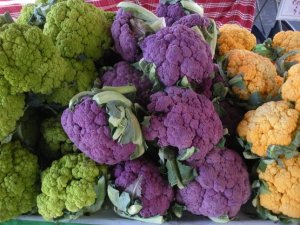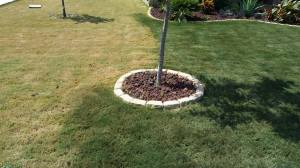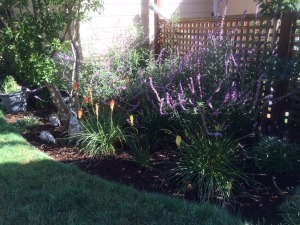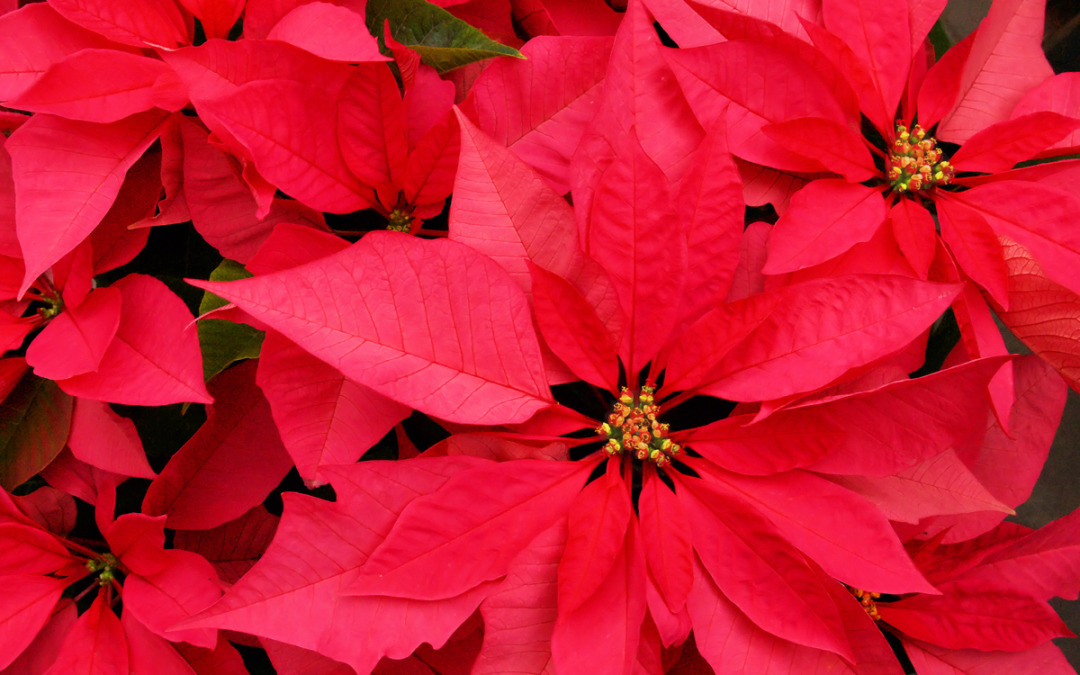Chef Rebecca Tip!! - January
January 12th, 2021

Master Gardeners of Santa Clara County will showcase their knowledge and a new location in October at the historic Martial Cottle Family Ranch.
The ranch was established by Edward Cottle in 1864. It was maintained and farmed by the Cottle family for 150 years.
Cottle emigrated from Missouri by wagon in 1854. He first settled in the Coyote Creek area before purchasing part of Rancho Santa Teresa in 1864, where he raised dairy cows and beef cattle, and planted row and grain crops.
Cottle’s son, Martial, and his descendants retained 350 acres of the original homestead as productive farmland through 2014. In 2003, the family transferred 287 acres to the state and county for development of a public park and educational facilities that would preserve the agricultural heritage and history of Santa Clara Valley.
Much of the park — 180 acres — will continue to be used for organic farming. There will be an on-site farm stand providing field-to-fork produce to the public. Other partners include the city of San Jose Community Gardens, 4-H, and an urban forestry program and the Santa Clara County Master Gardeners.
The Master Gardeners parcel will be 4 acres and will allow space for demonstration gardens, workshops, classes, educational tours and special events. Emphasis will be placed on the importance of sustainable agriculture in your backyard and the many benefits that gardening can provide: improved nutrition and fitness, water and soil conservation, and the positive emotional and mental health effects that being in the great outdoors can offer.
Future spring and fall garden markets will take place at the new site. The inaugural event will be Oct. 3 at the Fall Harvest Festival. This will be a terrific family outing featuring great food, farm-fresh produce, planting demonstrations and educational talks including how to grow cool-season vegetables and flowers, as well as growing drought-tolerant natives and water-wise landscaping.
There are many events planned to entertain and enlighten the kids, including planting activities, watermelon eating, pumpkin carving, a costume contest and a petting zoo.
There also will be a fabulous array of plants for sale — grown from seeds and cuttings by area Master Gardeners — that will enable you to grow your own organic produce right in your backyard. Options include peas, beets, broccoli, cabbage and cauliflower; leafy greens such as arugula, chard, escarole, spinach and variety of lettuces; and flowers, from Linaria and larkspur to snapdragons and sweet peas.
If you have a small space or just want to try out as many different options as possible, the variety packs are a great way to go. Look for samplers of garlic, broccoli, cabbage, cauliflower and lettuce.
Whether you are an avid gardener or are wanting to grow your own edibles for the first time, this is the not-to-be-missed garden event of the season.
The Fall Harvest Festival is set for 10 a.m.-3 p.m. Oct. 3, 5283 Snell Road, San Jose. Entrance and parking are both free.
Rebecca Jepsen is a Santa Clara County Master Gardener

Now that most of our lawns are brown, many folks are pining the loss of their lush, green landscapes and looking for a potential quick fix. There’s lot of talk about installing fake grass or painting or dying the lawn green, but what are the ramifications?
While painting or dyeing the lawn is cheaper than installing fake grass, it is not without its concerns. It is touted as eco-friendly by paint and dye companies, but most of the colorings contain heavy metals as part of their formulations.
A study done at Clemson University showed that these products disrupts the lawn’s ability to cool itself through transpiration, causing elevated temperature. Painted lawns had an average temperate of 110 degrees. Heavy concentrations of zinc and copper also were found. The products need to be reapplied after a few months; your lawn will continue to grow and at some point the coloring will be mowed off.
There have been no in-depth studies as to how soil health is affected, but in the Clemson study, turf quality was reduced with long-term use.
There are several brands of artificial turf to choose from. Many look surprising real; some even have a grasslike feel. Most products are made by attaching plastic blades to a urethane backing, then using crumb rubber — made from recycled tires — as infill to create that cushioned feel underfoot.
Crumb rubber has the potential to release a complex variety of chemicals into the air. It can also harbor bacterial growth, which can be transmitted to folks who have frequent contact. There are even concerns around increased cancer rates among athletes with extensive exposure to artificial turf.
Heat also is a concern. According to a study by Brigham Young University when the outdoor temperate is 90 to 100 degrees, synthetic grass can reach a temperature up to 200 degrees.
Then there’s the smell. Years ago I put in small amount of fake lawn for my dog. In just a year, even in part shade and with weekly cleaning, it reeked of urine and had to be removed. If you’re considering creating such a spot, I recommend laying a thick carpet of compost in the area.
Eventually artificial turf will break down and need to be removed. It will then sit in the landfill, releasing harmful gasses into the environment.
Turfgrasses are an alternative. They are relatively inexpensive, provide excellent control of soil erosion, floods and dusts while returning oxygen to the air, sequestering carbon and providing heat dissipation and temperature moderation. They also reduce noise and glare, and provide a highly desirable surface for outdoor sports and activities.
There are many water-wise, low maintenance options for having that iconic lawn. Native grasses, once established, use very little water. There are a variety of sod options that use 50 percent less water than traditional turf lawns.
The issue isn’t really as much about the lawn itself, but how we maintain it. A lawn really only needs water twice a week, and only enough to moisten the top 12 inches. To avoid runoff, aerate and compost your lawn once or twice a year, use a mulching mover and leave the grass clippings on.
By reducing the size of your lawn and creating planting areas of native, water-wise plants that support our local habitat, you really can have a gorgeous landscape and save water, too.
Rebecca Jepsen is a Santa Clara County Master Gardener.

I think it is safe to say the mandatory cutbacks have really gotten our attention. Whether in my role as a Master Gardener, meeting with my clients in the real estate world, or just out for coffee or dinner, nearly every conversation is about the drought and how we — and our landscapes — are going to survive while meeting the restrictions.
There are 13 water retailers in Santa Clara County alone and dozens more in the Bay Area. They have all implemented different rules and regulations in order to meet the statewide mandate of a 25 percent reduction.
Some are requiring residents to cut back 30 percent of their monthly 2013 usage. Some allow only set units of water per month, regardless of the size of home, property or number of folks living there. Most have also limited outdoor irrigation to just twice per month.
Most of our trees, shrubs and even those water-guzzling lawns will survive with that amount of water. And, of course, native and Mediterranean landscapes can survive and even thrive with much less.
You may be considering changing your landscaping to reduce water, but now is not the best time to plant. That’s in the fall. Now is the time to do your research and planning.
There are thousands of great water-wise habitat options for every inch of your yard. Here are a few favorites:
TREES
Redbud, crabapple, crepe myrtle, madrone, Washington hawthorn
SHRUBS
Manzanita, ceanothus, salvia, lavender, verbena, Oregon grape, currant, pineapple guava, toyon
FLOWERS
Cosmos, serpentine columbine, sunflower, yarrow, zinnia, monkey flower, penstemon
HERBS
Rosemary, oregano, thyme, sage, lemon balm, chives
LAWN ALTERNATIVES
Carex pansa/texensis, creeping red fescue, junegrass, creeping thyme; native bentgrass and native mow-free, both from Delta Bluegrass.
If you are going to make the move this fall, stop watering your lawn now, as well as the shrubs, trees and flowers you intend you remove and replace. Use this time to plan and prepare the areas that you are going to redo and wait until fall to start planting. All plants, including low-water ones, need to be irrigated for the first two or three years until they are established.
We are blessed to live in such a beautiful region. Not only do we have the responsibility to preserve it, we have a fabulous opportunity to make it better. Replacing lawns, plants that are past their prime and ones that weren’t meant to be here with gorgeous, water-wise options that support our local birds, bee, bugs and butterflies can transform your standard landscape into a thriving, backyard oasis.
For rebate programs and more ways to save, contact your local water retailer.
Rebecca Jepsen is a Santa Clara County Master Gardener.

Some traditional plants associated with the holiday season — including poinsettias, amaryllis, mistletoe and cyclamen — can cause mild to severe symptoms if ingested by children or pets. So at this time of year, be careful where you place them in your home.
Animals, particularly puppies and kittens, are vulnerable since they tend to chew on plants. Gastrointestinal upset is the most common result, but symptoms can vary, depending on the amount of the plant material ingested. Seizures, comas and even death are possible if the amount is large enough.
If ingested, poinsettias can cause mild nausea or vomiting, but they are not considered fatal. In addition, sap from the plant can cause skin rash, so it should be washed off with soap and water as soon as possible after contact.
Amaryllis contains lycorine and other substances that can trigger vomiting, diarrhea, decreased appetite and abdominal pain. The bulb of the plant is more toxic than flowers and stalks. The bulb is especially toxic to cats, causing feline kidney failure.
Holly berries, with their bright red fruit, often are interesting to children, yet they contain the toxin saponin, which can be poisonous. Ingestion of one or two berries shouldn’t cause symptoms, but the swallowing of larger quantities can result in nausea, vomiting, stomach pain and diarrhea.
Mistletoe contains substances (toxalbumin and pharatoxin viscumin) in both its leaves and berries that are highly toxic but not normally fatal. Symptoms from ingesting any plant parts can include vomiting, diarrhea, stomach pain and a drop in blood pressure.
Cyclamen contains glycoside in the plant’s tubers and rhizomes. Ingestion can cause excessive salivation, vomiting, diarrhea, heart arrhythmia, seizures and, in extreme cases, even death.
Evergreen trees may present problems, too, since oils in the needles can be irritating to the skin. If ingested, they can cause vomiting, drooling and stomach irritation.
Pyracantha, often used in table decorations, is generally safe. A lot of its berries would need to be ingested before causing a problem. Lilies (including the Easter and Stargazer varieties), however, can be extremely toxic to pets, especially cats.
In addition to the natural chemicals in plants, remember that some may have been treated with pesticides by the growers — yet another reason to choose organically grown products when possible.
This season is also a good time to keep in mind that chocolate can be highly toxic to pets, due to the presence of theobromine, a liquid that results from the grinding of hulled cacao beans. Toxicity levels are generally at their highest in chocolate liquors, diminishing in scale in baking chocolate, semisweet and milk chocolate.
Rebecca Jepsen is a Santa Clara County Master Gardener.
Link to article: http://www.mercurynews.com/home-garden/ci_27011292/master-gardener-some-holiday-plants-are-toxic

Although there really isn’t an “offseason” when crops don’t grow well here in the Bay Area, I am always amazed by the number of gardeners I know who don’t plant a cool-season garden.
Since I come from the Midwest, where taking a winter break from gardening is a necessity rather than an option, I feel incredibly blessed to be able to grow my own food here all year long.
But those who don’t enjoy planting and tending brassicas, root vegetables, herbs and leafy greens that thrive during fall and winter months should consider doing their soil a favor by planting cover crops for the cool season.
Cover crops are essential for building healthy soil — a self-sustaining ecosystem that includes millions of macro- and micro-organisms. Healthy soil teems with several types of beneficial worms, fungi and bacteria. These break down and digest organic materials such as compost, mulch and manures, making more nutrients available to summer-garden plants.
In addition, cover crops improve absorption and retention of water, provide food and shelter for beneficial insects, compete with weeds and so reduce the number of them you must contend with come spring, reduce erosion and — very significantly — reduce the need to turn to the chemicals used when someone tries to grow anything in soil that isn’t healthy.
If those advantages aren’t enough, many cover crops are prolific, edible and tasty!
In Santa Clara County, we generally try to add nitrogen and loosen up our heavy clay soil. Nitrogen-fixing legumes can fix 100 to 200 pounds of nitrogen per acre, so they are often used as cover crops by local farmers. To add the largest amount of nitrogen, they use vetch and/or cowpeas. The latter can add 100 to 130 pounds of nitrogen per acre in two to three months.
Relatively drought-tolerant legumes such as cowpeas and hyacinth bean generally perform well with as few as two irrigations per season.
Now for some terms: When crops in full bloom are turned under the soil, the process is called adding “green manure” to the soil. Addition of organic matter to soil is sometimes called “carbon farming.” This practice improves the rate at which carbon dioxide is removed from the atmosphere and converted to plant material or organic matter in the soil. Many scientists have said the use of cover crops for carbon farming is the simplest way to slow climate change.
Buckwheat is good choice for a quick between-seasons cover crop. It germinates in about five days and is ready to be turned under in about a month. It can be planted now, and cool-season crops can be planted later in the fall. Its white flowers attract beneficial insects, and can be used in cut-flower arrangements. If weed control is a goal, buckwheat is an effective “smother crop.” If you grow enough and let it go to seed, you can harvest it to make your own buckwheat flour.
Another option, crimson clover, is easy to grow and beautiful. It reaches about 18 inches in height and produces large deep-red flowers in the spring. It also provides ample quantities of nitrogen. It is a great option for areas that receive only partial sun, and it can be grown in combination with other grass or legume cover crops. An excellent option for no-till gardeners, it should be cut down two to three weeks before planting crops that will take its place.
Many types of vetch, a vining plant, make excellent cover crops. Vetch generally grows to between 2 and 5 feet in height. The common cultivars for cover cropping are: purple (hairy silver leaves with reddish-purple flowers), common (bright green leaves with two-toned purple flowers) and hairy/woolypod (early blooming varieties with dark purple flowers).
Fava beans, my favorite, allow you grow a cover crop and eat it too! They’re easy to cultivate. You purchase packs of seeds, soak them in water for 24 to 48 hours, plant them in a few inches of soil and water occasionally. A friend who is also a Master Gardener buys dried fava beans at the grocery store, tosses them on the ground and lets Mother Nature do most of the work.
If your primary goal is adding organic matter to soil for enrichment and/or erosion control, grasses/cereals such as oats, barley or rye are fine choices. However, they make nitrogen in the soil temporarily unavailable to the crop that will follow them, unless extra nitrogen is added. If you want to add both nitrogen and mass, buy a soil-building mix from a local garden center or catalog.
Opinions vary about whether you should turn cover crops into the soil or cut them down and allow the plant material to decompose on the surface. Tilling will disrupt or destroy established micro-organisms. If you are working with an existing garden that has been enriched regularly with compost and mulch for a few seasons, your best option is probably the cut and do-not-disturb method.
Rebecca Jepsen is a Santa Clara County Master Gardener. If you have questions, call the Master Gardener hotline in San Jose at 408-282-3105.
See more at: http://www.mercurynews.com/home-garden/ci_26460064/master-gardener-winter-cover-crops-nourish-soil
Those who want a jump-start on growing a plethora of fall and winter vegetables, herbs, leafy greens and even a wide assortment or ornamental plants will want to take note of the Master Gardener Fall Garden Market coming Oct. 4 to Emma Prusch Farm Park in San Jose.
The advantages of cool-season gardening are many: less watering, fewer pests and weeds, and being able to show off and enjoy homegrown food at holiday feasts. What’s more, some veggies — especially broccoli, cabbage and kale — taste sweeter after a frost.
Cool-season growing also supplies nourishment and a habitat for beneficial insects. Bees and wasps are especially drawn to the pollen and nectar from flowering vegetables.
Cool-season lettuces, arugula, escarole, cress, mâche, kohlrabi, radicchio and spinach supply practically everything needed for winter salads. And have you ever tried bright purple or vivid orange cauliflower? Both are great options for enticing kids to grow their own produce, which they actually will enjoy eating!
This year’s market, which benefits the Santa Clara County Master Gardeners, will offer variety packs of broccoli, cabbage, cauliflower and lettuce, which grow even in even small-space or container gardens. Other selections include several varieties of beets, chard, kale and peas to choose from, as well as such winter flowers as agrostemma, larkspur, snapdragons and sweet peas.
Before planting a cool-season crop, be sure to notice where direct sun hits your soil. Most plants will need at least six hours of sunlight daily, though some greens (lettuce, spinach) do OK with less. Remember to provide supplemental water, especially right after planting, and later perhaps, if we don’t get the rains we’re all hoping for this fall and winter.
The Fall Garden Market is being held in conjunction with the 21st annual Harvest Fair & Exposition at Emma Prusch Farm Park. This event is a family “country fair” type celebration right near downtown San Jose. It features a large pumpkin patch, 4-H exhibits, all-day entertainment (including performances by bands), food vendors and tours of the park, farmhouse, barn, orchards and Emma’s Heirloom German Kitchen Garden.
Rebecca Jepsen is a Santa Clara County Master Gardener.
Master Gardener Fall Garden Market
When: 10 a.m.- 4 p.m. Oct. 4
Where: Emma Prusch Farm Park, 647 S. King Road, San Jose
Admission/parking: Free
Also: Harvest Fair & Exposition at Emma Prusch Farm Park (address above), 10 a.m.- 4 p.m. Oct. 4, free admission and parking